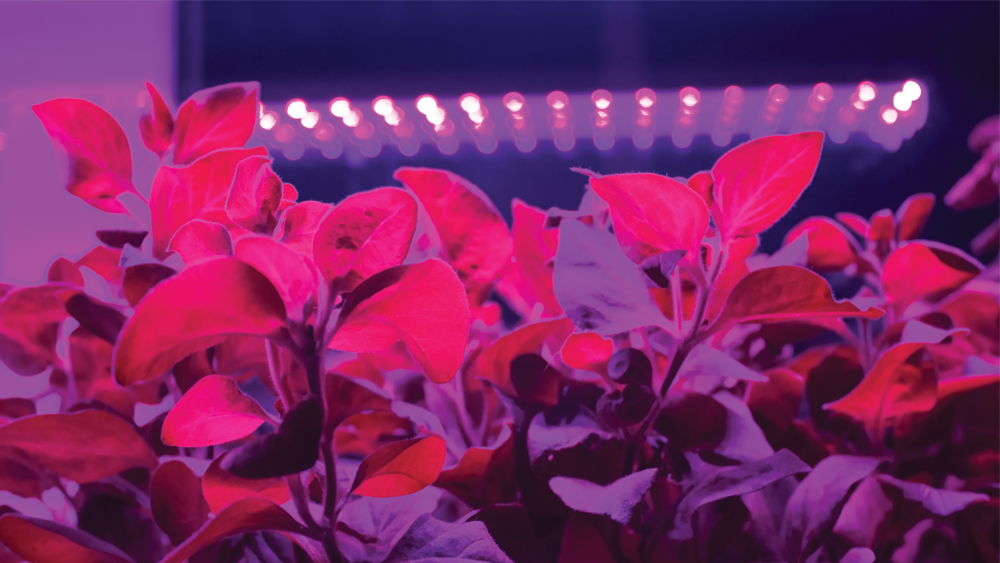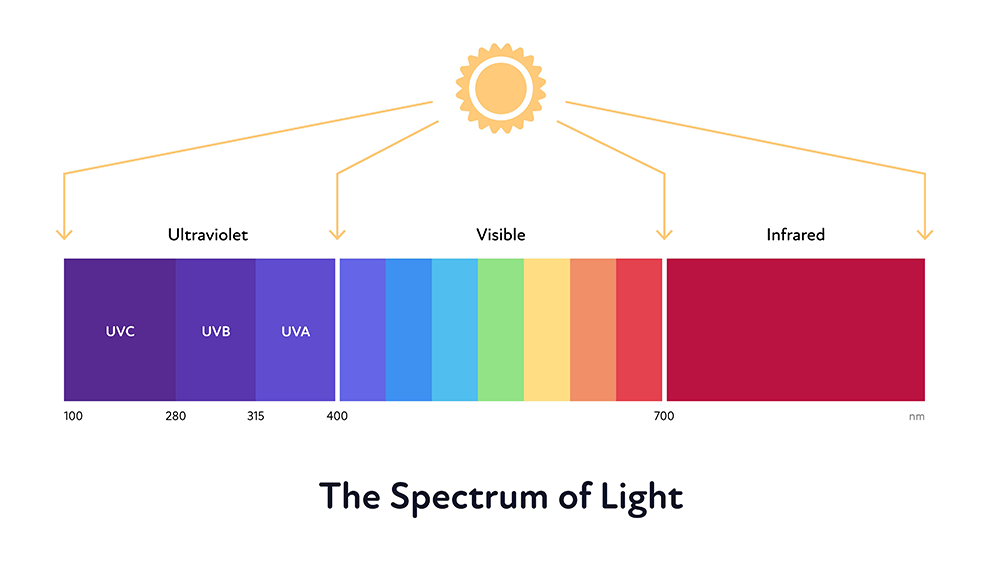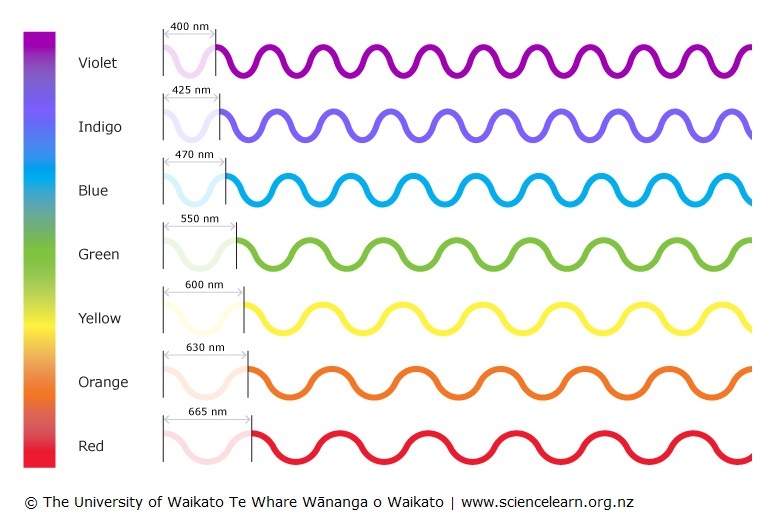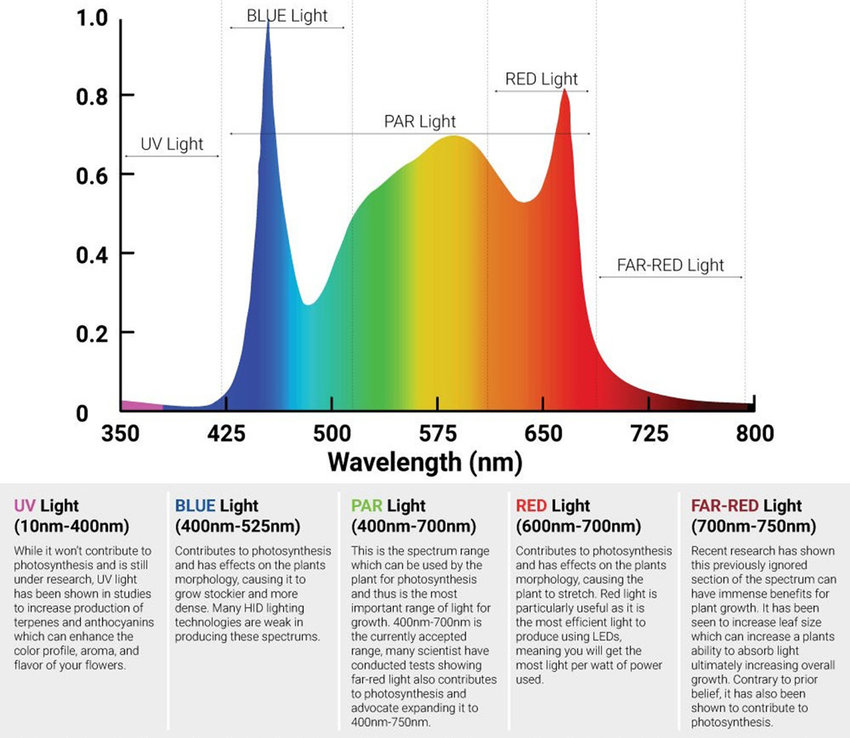
Grow lights are perfect for the fall and winter season when the days get shorter and daylight is scarce. But how exactly do they work? Here, we do a deep dive into how grow lights help plants through each growth stage, from seedling and vegetative to flowering and fruiting.
What is PAR and PPF?
In photosynthesis, plants absorb light and use that energy to make sugars that the plant can use.
The range of light energy that plants use for photosynthesis (wavelengths 400 to 700 nanometers) is called Photosynthetically Active Radiation (PAR). Light that doesn’t fall within this range cannot be absorbed by the plants and utilized for growth. PAR happens to also be the same spectrum of light that we can see.

Red and blue light, which are at the ends of the PAR spectrum, stimulate photosynthesis in plants best. Light toward the center of the spectrum (yellow and green wavelengths of light) is less effective in generating photosynthesis.
The second important term to know is Photosynthetic Photon Flux (PPF). Measured in micromoles per second (μmol/s), PPF is the amount of PAR a light source produces. By looking at PPF, you can find out much light your grow light fixture will produce that the plants can use for photosynthesis.
Wavelengths of Light are Associated with our Perception of Colors
Scientists use wavelength numbers to refer to colors instead of using color names. The higher the wavelength, the hotter the color (red); the lower the wavelength, the colder the color (blue or violet). Among all the colors in visible light, red has the longest wavelength of 700nm, while blue has the the shortest wavelength of 400nm.

Different Wavelengths of Light Trigger Different Responses in the Plant

Wavelengths, spectrum of effective light in plant growth (Anonymous 2021c).
Different light spectrum colors impact a plant’s growth. For instance, during the vegetative stage, using blue light will result in more compact, stockier plants. During the flowering stage, red light will increase the plant's growth rate and “stretch" the plant, resulting in larger yields. A plant requires a combination of various light colors throughout its lifespan.
Here's a breakdown of what each color does:
Ultraviolet Light
Originally thought to be dangerous and unnecessary for plant growth, UV light does have some benefits for plants. When exposed to UV rays, plants increase their essential oil production to create a reflective barrier that acts as a natural sunblock. This enhances the smell and flavor of the plants.
Violet Light
Violet light improves the color, taste, and aroma of herbs and microgreens. It also helps enhance the flavor and the number of antioxidants in the plant stems.
Blue Light
Blue light is readily available for absorption by chlorophyll. Blue light is used on its own during the early phases of plant growth, such as starting seedlings. But blue light needs to be carefully mixed with other colors in the light spectrum; overexposing a plant to blue light might stunt its growth.
Green Light
Green light is considered the least effective light color in plants’ growth and is not absorbed much by plants; instead, it is reflected back, which is why plants appear green to our eyes.
Yellow Light
Yellow light acts similarly to green and has little impact on plant growth.
Orange Light
Like yellow, orange is one of the most visible colors of the light spectrum and does not help much with the plant’s development. But most plants quickly absorb orange color without doing much damage; you don't have to worry about limiting their intake.
Red Light
Red light encourages stem growth, flowering and fruit production, and chlorophyll production. Like blue light, red light may not be effective on its own. Plants grown under red light solely may produce stretched, elongated appearance with thin leaves.
Far-Red Light/Infrared (IR) Light
Far-red or infrared light have long wavelengths and little energy. Infrared wavelengths are not visible to the human eye; they can only can be felt as heat. The appropriate amounts of far-red and infrared light can be promote stem growth, proper node spacing, and flowering.
Good Earth Lighting's Grow Lights
We offer a variety of grow lights so your plants can thrive through each growth stage. The grow lights are linkable, include auto-off timers, come in various sizes, include buttons that let you select a specific light spectrum (blue, red, or white), and more. Browse our selection on our website in the "Grow Lights" category.
